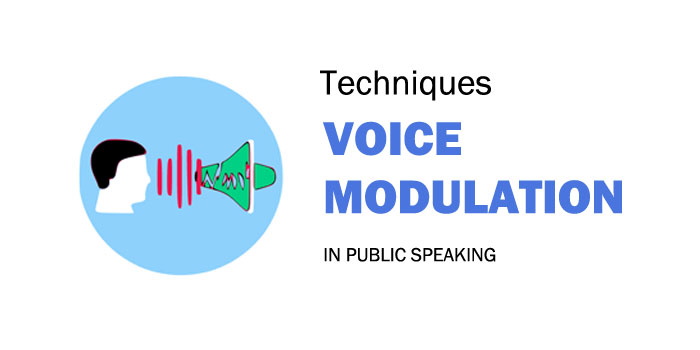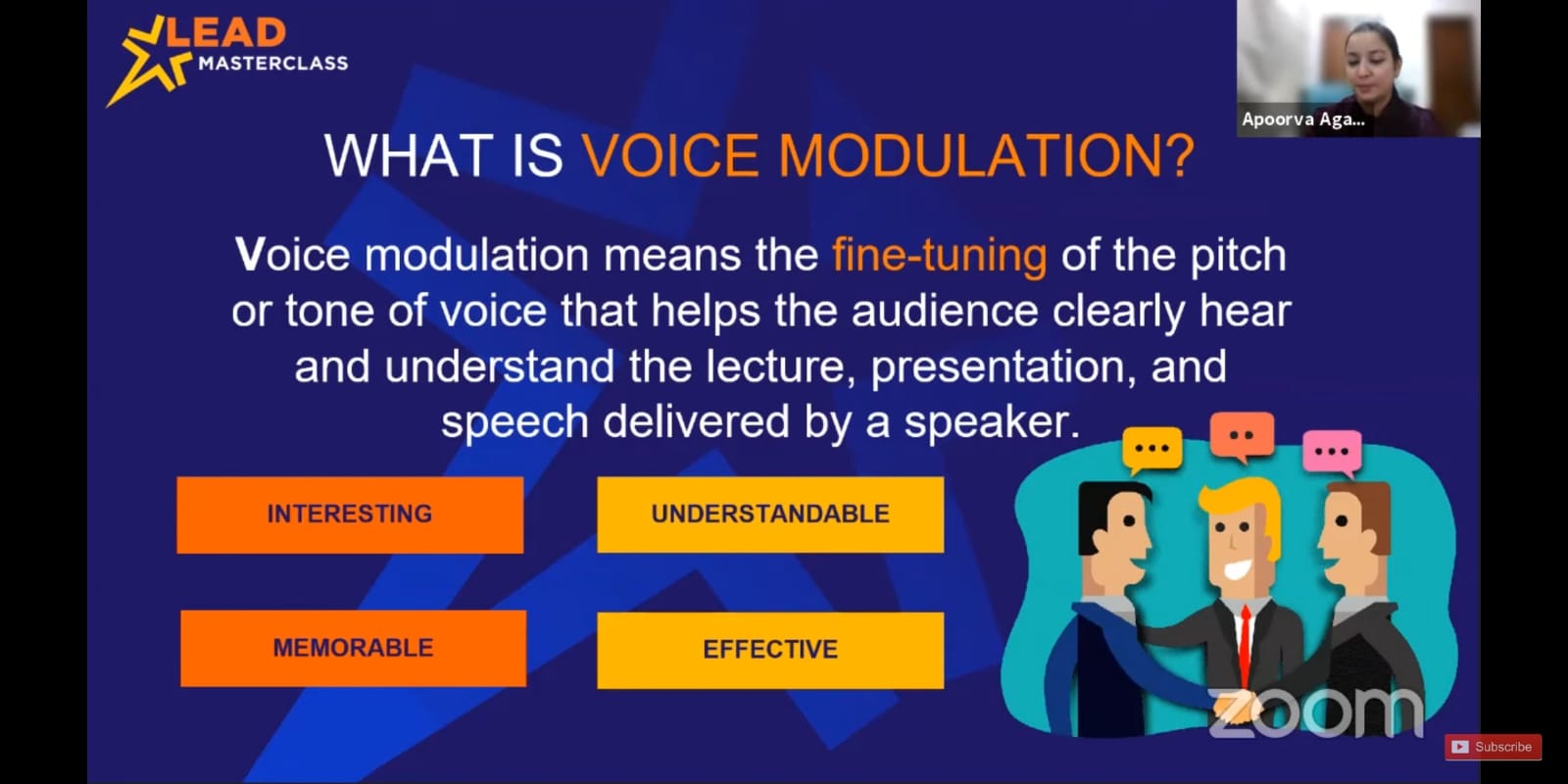How to Use Voice Modulation in Public Speaking?
To use voice modulation in public speaking, vary your pitch, volume, and pace for emphasis and engagement. We will discuss how voice modulation can enhance your public speaking skills and captivate your audience.
By understanding the importance and techniques of voice modulation, you will be able to effectively convey your message and maintain your audience’s attention. Whether you are giving a presentation, delivering a speech, or participating in a debate, voice modulation plays a crucial role in conveying emotions, emphasizing key points, and establishing a strong connection with your listeners.
So, let’s dive into the art of voice modulation and learn how to use it to your advantage in public speaking.

Credit: icebreakerspeech.com
Benefits Of Voice Modulation In Public Speaking
Using voice modulation in public speaking can have numerous benefits that help you deliver your message effectively and captivate your audience. These benefits include:
Building Confidence
Your voice has a significant impact on how you come across to your audience, and voice modulation plays a crucial role in building confidence. By varying the pitch, tone, volume, and pace of your speech, you can convey your ideas with poise and conviction. A confident voice can create a positive impression and help you establish credibility.
Enhancing Clarity And Understanding
Voice modulation enhances clarity and understanding by allowing you to emphasize key points and highlight important information. By varying your voice, you can draw attention to crucial ideas, making them easier to comprehend and remember. This helps prevent monotony and keeps your audience engaged throughout your speech.
Captivating And Engaging The Audience
Effective voice modulation can captivate and engage your audience, making your speech more memorable. By using pauses, inflections, and changes in vocal dynamics, you can add depth and emotion to your delivery. This helps to connect with your audience on an emotional level, making your message more impactful and increasing audience engagement.

Credit: twitter.com
Understanding The Elements Of Voice Modulation
In the realm of public speaking, mastering the art of voice modulation is crucial for captivating your audience and conveying your message effectively. One of the primary ways to achieve this is by understanding the four key elements of voice modulation: pitch, volume, pace, and tone. By fine-tuning these aspects of your voice, you can create a compelling and engaging speaking style that leaves a lasting impact on your listeners.
Pitch
Pitch refers to the highness or lowness of your voice. Varying your pitch not only adds depth and richness to your speech but also helps to emphasize important points and create a natural flow. By intentionally altering your pitch, you can express enthusiasm, urgency, or even convey a sense of authority. A high pitch can signify excitement or surprise, while a lower pitch can convey seriousness or authority.
Volume
The volume of your voice plays a crucial role in capturing the attention of your audience. Adjusting your volume helps to create contrast, highlight key ideas, and maintain the interest of your listeners. Speaking softly can draw people in, urging them to lean in and pay closer attention, while increasing your volume can command authority and ensure that even those in the back of the room can hear your important messages clearly.
Pace
Controlling the pace of your speech is essential for effective communication. By varying the speed at which you speak, you can influence the impact your words have on your audience. Speaking slowly and deliberately can emphasize important ideas, provide clarity, and give your listeners time to process information. Conversely, speaking quickly can create excitement, generate energy, and maintain engagement. Striking the right balance in pace is key to keeping your audience captivated throughout your entire presentation.
Tone
The tone of your voice reflects the emotional quality of your speech. By modulating your tone, you can inject enthusiasm, empathy, or even humor into your delivery, making your presentation more engaging and relatable. Matching your tone to the content and context of your speech helps to create a connection with your audience and allows them to connect with your message on an emotional level. An enthusiastic tone can inspire and motivate, while a calm and empathetic tone can establish trust and understanding.
Mastering the elements of voice modulation can greatly enhance your public speaking skills. By consciously incorporating variations in pitch, volume, pace, and tone, you can deliver a powerful and memorable presentation that resonates with your audience.
Techniques To Improve Voice Modulation
Improve voice modulation in public speaking by utilizing various techniques. Enhance your delivery through pitch, pace, volume, and emphasis, captivating your audience with a confident and engaging presentation.
Vocal Warm-ups And Exercises
Before stepping onto the stage, it is important to prepare your voice. Vocal warm-ups and exercises are an excellent way to relax your vocal cords and improve voice modulation. These exercises help in developing vocal flexibility and control, allowing you to effectively convey your message to the audience.
Here are a few vocal warm-ups and exercises that can help:
- Breathing technique: Deep breaths, filling your diaphragm, and exhaling slowly help regulate airflow and vocal resonance. Inhale through your nose and exhale slowly through your mouth.
- Vocalizing scales: Practice moving up and down the musical scales, starting from low to high pitches. It helps warm up your vocal cords and improves pitch modulation.
- Tongue twisters: Reciting tongue twisters like “Peter Piper picked a peck of pickled peppers” helps improve diction, articulation, and pronunciation.
Breathing Techniques
The way you breathe has a significant impact on your voice modulation. Proper breathing techniques can enhance the quality and tone of your voice. Incorporating diaphragmatic breathing into your public speaking routine can make a remarkable difference in your speech delivery.
Follow these breathing techniques to improve voice modulation:
- Diaphragmatic breathing: Place your hand on your abdomen and take slow, deep breaths, allowing your belly to expand. This technique helps in controlling breath support and maintaining a consistent tone.
- Counted breaths: Inhale deeply for a count of four, hold for a count of four, and exhale for a count of four. Repeat this cycle several times to regulate your breathing and reduce any nervousness.
- Yawning exercise: Mimic a yawn to open up your throat and relax your vocal cords. This exercise helps in producing a more resonant and controlled voice.
Emphasizing Keywords
One of the key aspects of voice modulation is emphasizing the right keywords to make your speech impactful and engaging. By emphasizing certain words or phrases, you can effectively convey your message and evoke the desired emotions in your audience.
Here are a few techniques to emphasize keywords:
- Varying pitch: Adjust your pitch on the important words or phrases. Raise your pitch slightly to highlight excitement or lower it to emphasize seriousness or importance.
- Changing volume: Increase or decrease your volume on specific words to create emphasis. Speaking softly can draw attention, while speaking loudly can show enthusiasm.
- Pausing: Pause briefly before or after an important word or phrase to build anticipation and emphasize its significance. Pauses can create dramatic effects and grab the audience’s attention.
Using Pauses For Effect
Pauses play a vital role in voice modulation and can significantly impact your public speaking delivery. Well-placed pauses allow the audience to absorb and process the information you are relaying, making your speech more memorable and impactful.
Here are some techniques to use pauses effectively:
- Strategic silence: Pause at key moments to create anticipation, suspense, or to emphasize a point. Giving your words time to linger can increase their impact on the audience.
- Reflective pause: Pause after making a powerful statement to let it sink in. This gives the audience time to process the information and allows for a greater emotional response.
- Timing: Use pauses strategically to control the pacing of your speech. A well-timed pause can help you regain focus, emphasize an important idea, or transition smoothly between thoughts.
Tips For Effective Voice Modulation
Learn how to effectively use voice modulation in public speaking with these expert tips. Discover techniques to engage your audience, convey emotions, and make your message more impactful. Master the art of controlling pitch, pace, and volume to captivate listeners and deliver a compelling presentation.
Know Your Audience
In order to effectively use voice modulation in public speaking, it is crucial to know your audience. Understanding the demographics, interests, and background of your listeners can help tailor your speech to their preferences. Be mindful of the language you use, the examples you provide, and the tone you adopt. For instance, if you are addressing a group of young professionals, you may want to adopt a more casual and conversational tone. On the other hand, if your audience consists of senior executives, a more formal and authoritative tone may be appropriate.
Practice And Rehearse
Practice makes perfect, and this holds true for voice modulation as well. To develop effective voice modulation skills, it is important to practice your speech multiple times. Stand in front of a mirror and rehearse your delivery, paying attention to your pitch, volume, and pace. Practice different emotions and tones to gauge their impact on the overall message. By rehearsing, you can identify areas for improvement and refine your voice modulation techniques.
Record And Evaluate Your Speeches
Recording your speeches and presentations is a powerful tool for self-evaluation. Set up a video or audio recording device and deliver your speech as if you were in front of an actual audience. Afterward, take the time to watch or listen to the recording and evaluate your voice modulation. Pay attention to moments where your voice may have been too monotonous or lacked emphasis. Look for opportunities to vary your tone, pitch, and volume to add interest and engage your audience. Self-reflection and continuous improvement are key to mastering voice modulation.
Observe And Learn From Experienced Speakers
One of the best ways to enhance your voice modulation skills is to observe and learn from experienced speakers. Attend conferences, seminars, or even watch TED Talks online to study the techniques employed by successful public speakers. Take note of their voice modulation, gestures, and overall delivery. What makes their speeches engaging? What techniques do they use to convey their message effectively? By studying and analyzing their methods, you can gain valuable insights and incorporate them into your own public speaking repertoire.
Common Mistakes To Avoid In Voice Modulation
Learn how to effectively utilize voice modulation in public speaking by avoiding common mistakes. Discover 6 guidelines to follow, including starting sentences without overused phrases, keeping sentences concise, maintaining the reader’s interest with varied expressions, and more. Enhance your speaking skills and captivate your audience with these helpful tips.
When it comes to public speaking, the way you use your voice can greatly impact how your message is received by your audience. Voice modulation is a powerful tool that can help you engage and captivate your listeners. However, there are common mistakes that can hinder effective communication. In this section, we will discuss three key mistakes to avoid in voice modulation: monotone delivery, excessive use of vocal fry or creeping, and inconsistent pace. By being aware of these pitfalls, you can enhance your public speaking skills and deliver a compelling message.
Monotone Delivery
One of the biggest mistakes in voice modulation is delivering your speech in a monotone voice. A monotone delivery lacks variation in pitch, tone, and intensity, which can make your presentation dull and uninteresting. It’s important to remember that your voice is an instrument, and like any instrument, it needs to be played with variation and expression. To avoid monotone delivery:
- Use inflection to emphasize key points and add depth to your speech.
- Vary your pitch by intentionally raising or lowering your voice to create interest and highlight important ideas.
- Pay attention to your tone, ensuring it aligns with the emotions and message you want to convey.
Excessive Use Of Vocal Fry Or Creeping
An excessive use of vocal fry or creeping can be off-putting to your audience. Vocal fry refers to the low and creaky sound produced at the end of a sentence or phrase. While it can add emphasis when used sparingly, overusing it can make your voice sound strained and unprofessional. To avoid excessive use of vocal fry or creeping:
- Be conscious of the natural pitch and tone of your voice, and strive for a balanced and clear delivery.
- Avoid falling into a habit of using vocal fry or creeping at the end of every sentence.
- Practice speaking with fluidity and clarity, paying attention to your intonation and vocal range.
Loudness Variations
Loudness variations can also affect the effectiveness of your voice modulation. While it’s important to vary your volume to add emphasis and convey emotion, excessive changes in loudness can be distracting and jarring to your audience. To achieve a balanced and effective use of loudness:
- Take note of your natural speaking volume and adjust it slightly when necessary to highlight key points.
- Practice speaking at a comfortable and consistent volume, ensuring that you are audible to your audience without overpowering them.
- Be aware of your surroundings, such as the size of the room or the availability of microphones, and adjust your volume accordingly.

Credit: www.linkedin.com
Frequently Asked Questions On How To Use Voice Modulation In Public Speaking?
How Can I Improve My Voice Modulation In Public Speaking?
To improve your voice modulation in public speaking, practice varying your pitch, volume, and pace. Record yourself and seek feedback from others to identify areas for improvement.
Why Is Voice Modulation Important In Public Speaking?
Voice modulation is important in public speaking because it helps capture and maintain audience attention, convey emotions, highlight key points, and add impact to your message.
What Are Some Techniques To Enhance Voice Modulation In Public Speaking?
To enhance voice modulation in public speaking, try techniques such as using vocal pauses, emphasizing specific words, using different tones for different sections, and practicing controlled breathing to maintain a steady and confident speaking pace.
Conclusion
To effectively utilize voice modulation in public speaking, it is crucial to harness the power of your voice. By implementing techniques such as varying pitch, volume, and pace, you can captivate your audience and enhance the impact of your message.
Remember to practice and experiment with different modulation techniques to find your unique style of delivery. So, step up to the podium with confidence, and let your voice be the instrument that leaves a lasting impression on your listeners.

